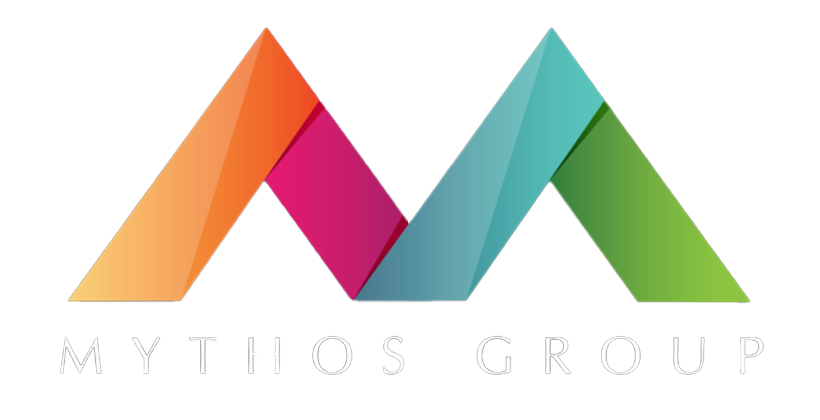Despite unprecedented investment in Chief AI Officer positions commanding average salaries exceeding $350K annually, only 26% of organizations achieve measurable value from artificial intelligence investments.
Meanwhile, 74% systematically underperform despite record spending on specialized leadership roles. The fundamental error is strategic inversion: companies start with technology and search for business applications instead of starting with business challenges and deploying AI to solve them.
The organizations that win? They embed AI capabilities where business decisions occur and consistently outperform those managing AI through administrative structures.
The Coordination Trap
Gartner predicts 30% of generative AI projects will be abandoned after proof of concept, with only 48% progressing from pilot to production. The performance gap reveals fundamental organizational design failures, not technological limitations.
Commonwealth Bank demonstrates the alternative approach. The bank operates over 2,000+ machine learning models embedded across business operations, achieving 40% reduction in call volumes and 50% reduction in customer scam losses through business-integrated deployment.
MIT Sloan Management Review research confirms that “a majority of companies are developing AI capabilities but have yet to gain significant financial benefits.” Elite AI professionals systematically avoid Chief AI Officer positions, choosing roles where technical depth directly drives business impact.
How Market Leaders Execute Differently
Market leaders don’t have “AI strategies” in the traditional sense. Instead, they have business strategies where AI amplifies human capability and accelerates decision-making.
ING Netherlands embedded AI capabilities directly within operational functions, achieving 25% productivity gains and 80% accuracy in predicting software project delays. JPMorgan Chase exemplifies capability amplification through CEO Jamie Dimon’s direct oversight of AI implementation strategy.
When business leaders maintain direct authority over AI deployment, technical capabilities serve immediate customer requirements rather than administrative processes. This enables market-speed implementation rather than committee-speed deliberation.
DBS Bank operates comprehensive AI infrastructure across 350 use cases, with measured economic impact projected to exceed SGD 1B by 2025. SAP demonstrates this integration through their “AI built in, not bolted on” philosophy, with their Joule AI assistant enabling users to complete tasks 90% faster.
Five Principles For Business Integration
Organizations achieving measurable AI business impact follow systematic approaches that embed technical capability within business operations. Boston Consulting Group research validates this approach: “70% will focus on developing new business processes, 20% will involve technology implementation, and 10% will lie in building machine-learning models.”
Business Challenge Primacy sits at the center. Successful organizations frame AI initiatives around specific operational problems rather than available technologies. TCS analysis of 1,300 CEOs demonstrates that 86% deploy AI to enhance existing revenue streams rather than pursue technology exploration.
Executive Technical Fluency creates the execution foundation. Direct CEO involvement in AI deployment decisions represents the organizational factor most strongly correlated with implementation success. JPMorgan Chase eliminates the separation of authority from expertise through direct executive engagement.
Embedded Implementation Authority distributes AI deployment decisions to business units while maintaining centralized risk management. Technical specialists embedded within operational functions respond to business requirements with immediate AI solutions because they understand customer behavior and competitive pressures.
Integrated Talent Architecture develops technical capabilities within existing business functions rather than creating separate AI departments. This combines deep business domain knowledge with appropriate technical skills, enabling professionals who understand customer requirements to deploy AI solutions.
Results-Driven Measurement ensures accountability through business outcomes rather than deployment statistics. RBC’s NOMI platform serves 1.5M users and helped clients save more than C$4.5B since 2017 through clear business value metrics.
[These five principles work as an integrated system: Business Challenge Primacy anchors the center, with Executive Fluency and Embedded Authority forming the execution foundation, while Integrated Talent Architecture and Results-Driven Measurement create reinforcing feedback loops.]
The Binary Strategic Choice
Every organization faces a fundamental decision: embed technical authority where business accountability exists, or coordinate AI through administrative structures. This choice creates divergent organizational trajectories with compounding competitive implications.
Chief AI Officers inherit impossible mandates: coordinate technology they didn’t build for business outcomes they can’t directly influence. Harvard Business Review research confirms that “successful AI adoption comes from a distributed leadership model where responsibilities are shared across executives and departments.”
The organizational evolution pathway offers three strategic options:
Transition approaches convert Chief AI Officer roles into VP of AI Product positions with profit and loss accountability, creating direct business outcome responsibility.
Hybrid models maintain strategic oversight while embedding execution authority in business units, separating governance from implementation.
Advisory frameworks provide internal consulting support to business unit AI initiatives while eliminating coordination bottlenecks.
Why Business Excellence Wins
Organizations that embed AI capabilities within business operations create sustainable competitive advantages that coordination approaches cannot replicate. The advantage stems from execution speed, talent attraction, and value creation that compound over successive planning cycles.
Execution velocity represents the primary competitive differentiator. When technical authority aligns with business accountability, organizations deploy AI solutions at market speed rather than governance speed. MIT Sloan Management Review confirms that “individual teams are best suited to determining how they work best with AI” because centralized processes “go far too slowly for AI.”
The talent gravitational effect creates compounding organizational advantages. High-performing technical professionals seek roles where expertise directly influences business outcomes. Business-integrated organizations attract technical specialists who build transformative systems rather than manage administrative processes.
Boston Consulting Group research shows companies following business integration principles realize “average cost savings of 45% and 60% higher revenue growth compared to peer firms.”
Strategic Implementation
The organizational design choice for AI implementation has become time-sensitive as competitive advantages compound and market windows narrow. Organizations have approximately 18 months to establish business-integrated AI capabilities before coordination approaches create irreversible competitive disadvantages.
Chief executives should develop sufficient AI technical fluency to make informed resource allocation decisions without intermediaries. Resource allocation should follow the validated seventy-twenty-ten model: 70% investment in people and process transformation, 20% in technology infrastructure, and 10% in algorithmic optimization.
Performance measurement systems should focus on business outcomes rather than deployment statistics. Success indicators must include customer satisfaction improvements, revenue growth, and operational efficiency gains that validate AI investment effectiveness through market results.
The strategic imperative is clear: organizations must choose between business capability amplification and technology coordination. Companies that embed AI capabilities within business operations will capture sustainable competitive advantages through superior execution, talent attraction, and customer value creation.
Business excellence amplified by AI creates sustainable competitive advantage. Administrative coordination produces systematic underperformance that accelerates over time.







